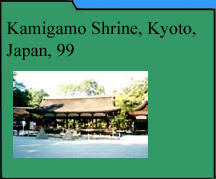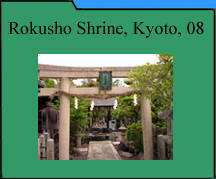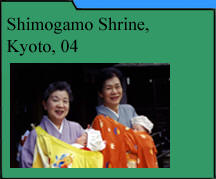back to
Gallery Mainpage
Shinto
Shinto means 'the
way of the gods' (also known as 'kami no michi'). It is a spiritual
tradition distinct to Japanese culture. The 'gods' (i.e. 'shin'
or 'kami') are spirit powers residing in heaven and earth. In
ancient times, the idea of these spirits was similar with other
animistic traditions (see the gallery section, Shamanism in Korea).
By the 5th and 6th centuries, Shinto became strongly influenced
by Buddhism and Confucianism as introduced from China and Korea.
According to Japanese tradition, Father Sky and Mother Earth spirits
gave birth to Amaterasu Omikami, the Sun Goddess who is considered
to be the ancestor of the emperor.
During the Meiji period (1868-1911),
the government gave the emperor special importance and emphasized
his divine ancestry. Shinto was formalized and employed as a state
supporting ideology. In 1945, partly under influence of the Allied
Occupation, Shinto was disestablished as a state religion and
regarded as a religion alongside others, such as Buddhism. Shinto
continues as a pervasive influence on Japanese customs, rituals,
and artistic expressions regarding spiritual help for people during
turning points of seasons, village festivals, life transitions
and crises. For most people, Shinto practice is more closely
related to their personal efforts to keep harmony with nature
and health and success for themselves, family, and business rather
than to imperial ideology.
In this section of the Gallery,
one folder shows images from the House of the Sun, located outside
Tokyo. The House of the Sun is a residential center for youth
and adults with developmental disabilities. The site was converted
from a traditional samurai home that now provides facilities for
social welfare workers from various Asian countries who come for
a residential learning experience. Contemporary buildings provide
a dormitory for people with disabilities, some of whom also work
in the nearby town, as well as a pottery studio where ceramic
artists teach residents and local people how to make pottery.
The other folder shows some places
from the Kamigamo Shinto shrine in Kyoto. People can stand in
front of the sand cones, clap their hands in respect to gain the
spirits' attention, and pray for blessings from the Thunder Spirit.
A small shrine is detailed, dedicated to a snake (dragon) spirit
of the nearby mountain. This spirit is associated with the stone
enshrined there.

















